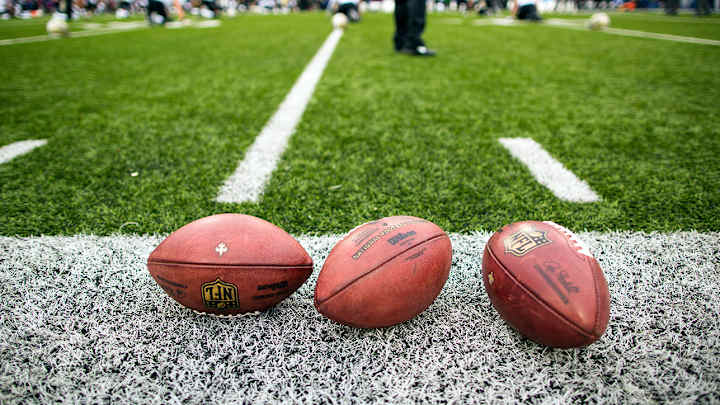Report: Some NFL Players, Families in Brain Trauma Settlement Told They'll Receive Little to Nothing

USA Today's Brett Murphy and Gus Garcia-Roberts reported Tuesday that some NFL players and families of those with brain trauma have received notice that their portion of the league's $1 billion settlement has been stripped away to barely anything.
The first lawsuits in the class action suit were filed in 2011, with an initial settlement announced in 2013. But the case wasn't finalized until 2017 when the NFL agreed to pay more than $1 billion in settlement for victims of chronic brain trauma.
As players and families are now learning of their payout determinations, USA Today reported that they're finding them to be less than expected. Some have been stunned to find they may receive a fraction of that they're owed or even payments in the negative, which will likely set off more court battles, per USA Today.
Upon release of their report, Christopher Seeger, co-lead class counsel for the retired NFL players in the concussion settlement, questioned the accuracy of USA Today's story.
"The USA Today story contains numerous inaccuracies and presents a misleading picture of how the settlement process works," Seeger said in a statement to Sports Illustrated. "The basic fact, which USA Today buries in its report yet hinges its entire story upon, is that the payout determinations it highlights are not final."
According to USA Today, the family of the late Ralph Goldston, who played on the Eagles in 1952 and developed Alzheimer’s during his retirement, learned they would be awarded $160,000. But that amount became negative $737 after deductions and "holdbacks."
"As the reporter was told - yet failed to include - of the class members receiving monetary awards with finalized liens, the majority had $0 deducted from their awards for medical liens or lien-related fees," Seeger said. "For the minority that did pay medical liens and related fees, their average deduction has been 2.2%. No class member has been left with a 'negative' settlement amount. To imply otherwise is completely irresponsible."
USA Today looked at documents and interviewed families in a dozen cases of players whose settlement was reduced. That money will for now remain in the fund or be directed to insurance companies, lawyers, credit card companies and others who placed a lien on the award, they reported.
The payout determinations are not final, as Seeger clarified, as officials and lawyers sort through lienholders' claims. Players can also appeal deductions. According to USA Today, out of the 20,000 players involved in the suit, less than 700 have been approved for payment.
In some cases, attorneys, who players say did little work or were fired before the case settled, have also come forward to demand a share of payments.
While parties in other high profile, class-action settlement cases negotiated the ability to increase award amounts to make sure victims' payouts weren't diminished, similar steps were not taken in this case, according to USA Today.
"I’ve heard of guys receiving a tenth of what they were going to get," former linebacker Andrew Stewart, who now has Parkinson’s, told USA Today. "Nobody’s getting what they thought they were getting."
